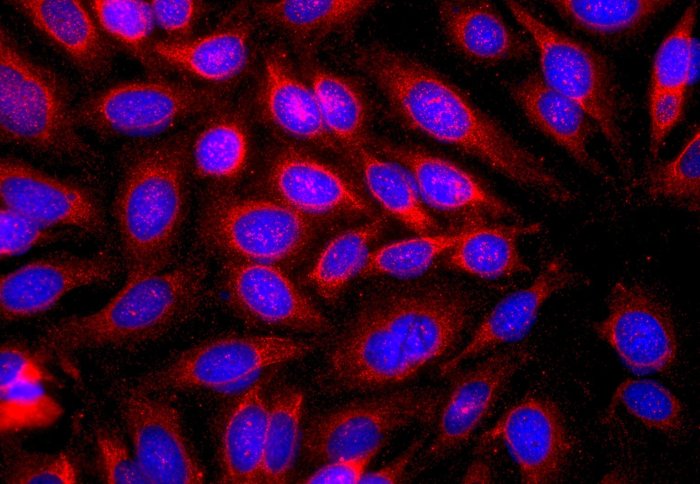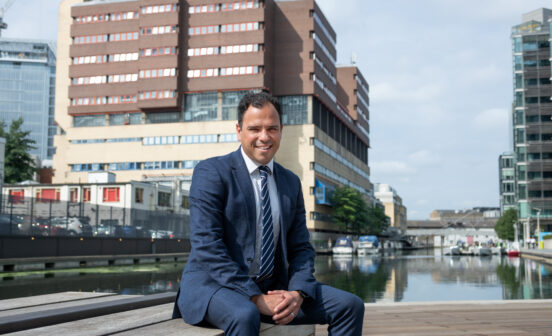Guideline Research shows risk of dying of cancer differs greatly across regions in England

In an analysis of mortality rates for 10 forms of cancer with the largest death toll for men and women, researchers found the risk of dying from cancer varies widely depending on which district in England patients live.
The study was funded by Wellcome, Imperial College London, UKRI Medical Research Council and the National Institute for Health and Care Research.
The findings, with biostatistics provided by the NIHR Imperial BRC, show that while at the national level the risk of dying from cancer before 80 years of age declined from 2002-2019 for both men and women, the highest risks were in northern cities such as Liverpool, Manchester, Hull and Newcastle, and in coastal areas to the east of London.
The risk for women dying from cancer before 80 years of age ranged from one in ten in Westminster to one in six in Manchester, while for men the risk ranged from one in eight in Harrow (Greater London) to one in five in Manchester.
Mortality risk was associated with poverty for both sexes, and the greatest inequality across regions was for cancers with risk factors such as smoking, alcohol and obesity, and for those which could be prevented or detected early by screening.
According to the researchers, the findings highlight stark inequalities across the country and an urgent need to strengthen national and local public health and screening programmes.
Professor Majid Ezzati, senior author of the study and Professor of Global Environmental Health at Imperial College London, said: “Although our study brings the good news that the overall risk of dying from cancer has decreased across all English districts in the last 20 years, it also highlights the astounding inequality in cancer deaths in different districts around England.”
Changing risk
Cancer is now the leading cause of death in England, having overtaken cardiovascular diseases, but there is a lack of data on the risk of dying from different types of cancer, and how this risk has changed over the last 20 years.
In the latest study, researchers estimated how the risk of dying from cancer in England has changed from 2002 to 2019 for areas as small as local authority districts.
Using death records across the period they measured the number of deaths caused by 10 cancers with the largest death toll for each of men and women in the 314 regions in England. The team also included the proportion of people claiming income-related benefits due to being out-of-work or having low earnings to work out the relationship between the risk of dying from cancer and poverty.
They found that nationally, the risk of dying from cancer before 80 years of age declined for both sexes from 2002-2019, from one in six to one in eight for women and from one in five to one in six for men. However, some regions had a larger decline than others.
For women, the greatest district-level reduction in the risk of dying from a cancer was nearly five times that of the smallest (30.1% decline in Camden (London), compared to a 6.6% decline in Tendring (Essex)).
For men, the largest decrease was triple that of the smallest (36.7% in Tower Hamlets (London) compared to 12.8% in Blackpool). Overall, districts in London achieved the largest declines.
The risk did not decrease for all types of cancer, as the risk of dying from pancreatic cancer increased for men and women in all districts apart from one, and the risk of dying from liver cancer among men and from endometrial cancer among women increased in all districts.
Although deaths from lung cancer reduced from 2002 to 2019 in every district for men, the result was more mixed for women with the risk of dying decreasing in many districts, particularly in London, but mostly staying the same elsewhere and increasing in some areas in the East of England. The authors speculate that this is due to the rise and fall in female smoking lagging behind men by about 20-30 years.
Inequalities in mortality
In 2019, the risk of dying from cancer before 80 years of age ranged from one in 10 in Westminster to one in six in Manchester for women, and from one in eight in Harrow to one in five in Manchester for men. The highest risks of dying were in northern cities such as Liverpool, Manchester, Hull and Newcastle, and in coastal areas to the east of London.
The risk of dying from cancer was higher for both men and women in districts with more poverty. In part, this was due to the risk of dying from lung cancer – the leading cancer cause of death for both sexes – being strongly linked with poverty.
Lung cancer was also one of the cancers with the most inequality in risk of dying across different districts, with women in Knowsley in 2019 having triple the risk of dying from lung cancer than those in Waverley, and men in Manchester having triple the risk of dying from lung cancer than men in Guildford.
Both men and women in poor districts of London had lower probabilities of dying from lung, colorectal and oesophageal cancer and men had a lower risk of dying from bladder cancer than in comparably poor districts in the rest of the country. Authors suggest this may be due to a combination of differences in cancer risk factors, such as smoking rates, between London’s ethnically diverse population and the rest of England, and differences in the quality of healthcare, with Londoners more likely to have access to specialised hospitals and advanced treatments such as immunotherapies.
Theo Rashid, first author and PhD student at Imperial College London, said: “The greatest inequality across districts was for the risk of dying from cancers where factors such as smoking, alcohol and obesity have a large influence on the risk of getting cancer.
“Due to funding cuts, many local authorities have reduced their budgets for smoking cessation since 2010. Our data shows we cannot afford to lose these public health programmes and are in urgent need of the reintroduction and strengthening of national and local policies which combat smoking and alcohol.”
Professor Amanda Cross, study author and Professor of Cancer Epidemiology, Imperial College London, and Co-Lead for BRC Surgery and Cancer Theme, said: “Access to cancer screening and diagnostic services which can prevent cancer or catch it early are key in reducing some of the inequalities our study highlights.
“Those who are more deprived are less likely to be able to access and engage with cancer screening. To change this, there needs to be investment into new ways to reach under-served groups, such as screening ‘pop-ups’ in local areas like supermarkets and working with community organisations and faith groups.”
The authors acknowledge some limitations of the study, including that they only analysed deaths from the 10 cancers with the highest death toll and did not separate the remaining group of cancer deaths into more specific cancer groups.
Additionally, the correlations with poverty were reported at the district level, but there are variations in both risk of dying from cancer and levels of poverty within each district.
Finally, the authors caution that this data only goes up to 2019 and say there is a need for further research to find out what happened to the risk of dying from cancer during the COVID-19 pandemic and corresponding pressures on the NHS.





